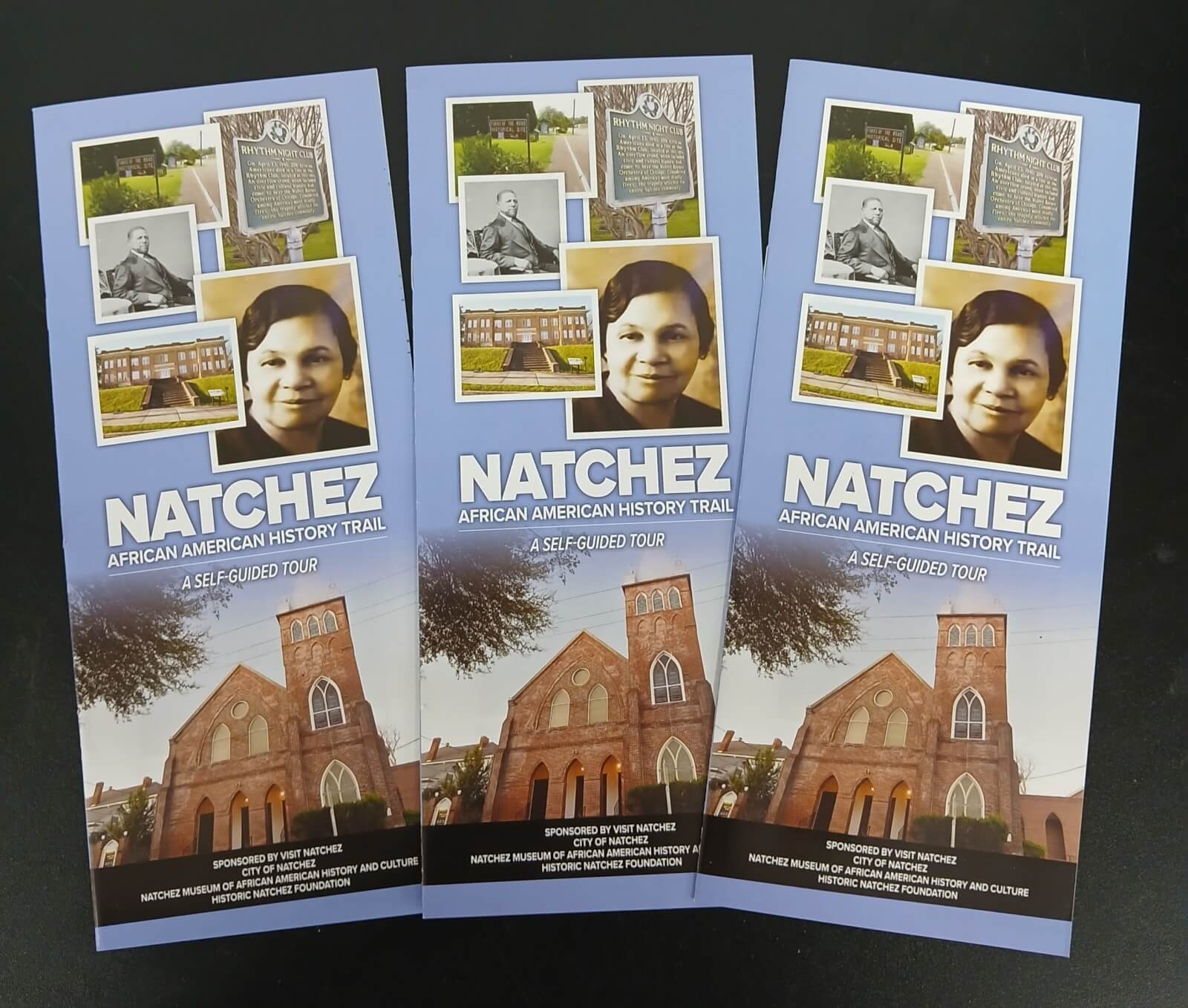African American CULTURAL LEGACY
The American south is steeped in a history that’s at the foundation of our country’s identity. Small town by town and city after city, their storied pasts have formed the nation into a multi-faceted and unique blend of ideals and experiences.
Some places have stories that aren’t hard to miss. Natchez, Mississippi, however, is one of those historical and cultural gems that, when discovered, reveal facets that demonstrate its significance and place in the roots of our nation. Like most southern cities, Natchez has the warmth and hospitality that only the south can provide. Filled with southern charm, it’s where one can instantly feel at home; where greetings from strangers are as plentiful as the sunshine.
That southern hospitality is often in concert with a history that includes the pains of slavery and its aftermath. Most cities try to leave the remnants of slavery in the past. Only a few have acknowledged their role and have made concerted efforts to transform their history into a story of inclusion, where its diversity is celebrated. That’s what makes Natchez different. Incredible tales of pirates, strength, insurrection, perseverance, and resistance make its history fascinating, come to life, and must be told.
Forks of the Road
By the time the state joined the Union in 1817, the extremely lucrative commodities of trading enslaved Africans and their forced labor producing tobacco and cotton had made Natchez home to the most millionaires in America prior to the Civil War. Eventually, this circular pattern of economic growth and the need for free labor fueled the plantation era. Wealth and maintaining a continuous flow of enslaved people caused the city’s population of Blacks to swell, drastically outpacing the number of enslavers by almost 3 to 1.
As one of the oldest incorporated cities in Mississippi, Natchez became a significant trading port and eventually the second-largest slave port in the south because of its deep water access on the Mississippi river. Named the Forks of the Road, the slave trade market was comprised of five buildings that penned enslaved people while they were prepared for sale. For thirty years, tens of thousands of enslaved Africans resisted their bondage, yet they continued to be sold until Union forces arrived in 1863 and set up camp.
Interestingly, even though the city’s prosperity relied on slave labor, Natchez chose to stay with the Union over seceding with most other southern slave states, including the rest of Mississippi. Ultimately, that decision proved significant, as it spared the city from experiencing the devastation and destruction that comes with war, in addition to over 600 pre-civil war homes that still stand today.
Post-Civil War
After the war, like most southern cities, a high number of formerly enslaved people remained in Natchez. Integration into society as productive citizens through education and other programs was established to aid them in achieving independence. Reconstruction in Mississippi lasted for 11 years, resulting in 226 Black Mississippians obtaining elected office on local, state, and federal levels. Most notable was Hiram R. Revels, who became the first Black Senator from Nachez and the founder of several schools for Black children.
The growth and improvements from Reconstruction, however, didn’t last. Regardless of the Union’s desire to ensure the success of several government programs, in an effort to control the formerly enslaved and to maintain their wealth and former way of life, Black Codes and Jim Crow Laws became common within the city and state and came very close to replicating the forced system of slavery and financial dependence. Eventually, that disparity in population and desire to return to how it was previously lent itself to Natchez becoming a hotbed for racism, segregation, and anti-Civil Rights activity from the KKK.
Looking Back, Transforming the Future
The Natchez of today has come a long way. The city’s direction and focus are similar to a Sankofa, an African proverb and tribal symbol represented by a bird looking backward to protect an egg on its back. Sankofa translates to one going back to honor the past so that it can improve the future. That’s exactly what Natchez has done. Recognizing and embracing its history, good and bad, allows residents and visitors to step back and learn about its past. It gives an opportunity to visualize the importance of moving forward into a transformed, unified and improved future.
Part of that change is being able to easily connect the richness of all of their cultural spaces around the city, thus creating a complete history and trail of historical sites, monuments and museums that should be on any must-see list.
Each place offers its contribution towards making Natchez what it is today. The Natchez Museum of African American History and Culture is a great place to start, as it is a culmination of sites and their stories of tragedy, like the Rhythm Night Club Memorial Museum and Natchez’s Civil Rights Sites that speak to individual strength and perseverance.
Location by location, the past is told in vivid detail. Each location, treasured and respected for the role it played in the city’s history, is there to be shared from generation to generation. They all build upon another, from the Forks of the Road the place where the enslaved arrived to the William Johnson House where it tells of his transformation from enslavement to freedom by the time he was 11, then becoming an enslaver to his financial prominence being known as the Natchez barber.






Stories From Those Who Lived It
The civil rights movement story can’t be told accurately without hearing it from the perspective of those who lived it. Natchez is determined to allow the correct one to be told. Around the city, places of remembrance, like the Proud to Take A Stand Monument, memorializes the protest and inhumane treatment that nearly 500 participants received after being arrested for marching without a permit.
Other significant historic and cultural areas of the city, like St. Catherine’s Street, are just one of many places that are part of what can be a days-long itinerary of discovery. Once a prominent and well-known Black financial and retail center, it was often referred to as another “Black Wall Street.” Dr. Bowman Banks, Natchez’s first black physician, also called it home, in addition to the NAACP and other organizations, who strategized and planned their civil rights activity. The doctor’s house and its cultural significance have been memorialized at the Dr. John Bowman Banks Museum.
Natchez has a powerful story. Each site fits like a puzzle, highlighting its vital part in the South’s and American history. Every cultural space offers an emotionally powerful yet important message of remembrance and achievement. It’s a place to not only be experienced but to be absorbed for the entirety of its history, from its namesake, the Natchez Indians, to its early days as a colony, to joining the Union, to the Civil Rights Movement, to today. This historical uniqueness has become the foundation for a unified and collectively diverse future, as all southern cities should. Natchez has done it right by creating a richly significant future that will continue to transform us all.


